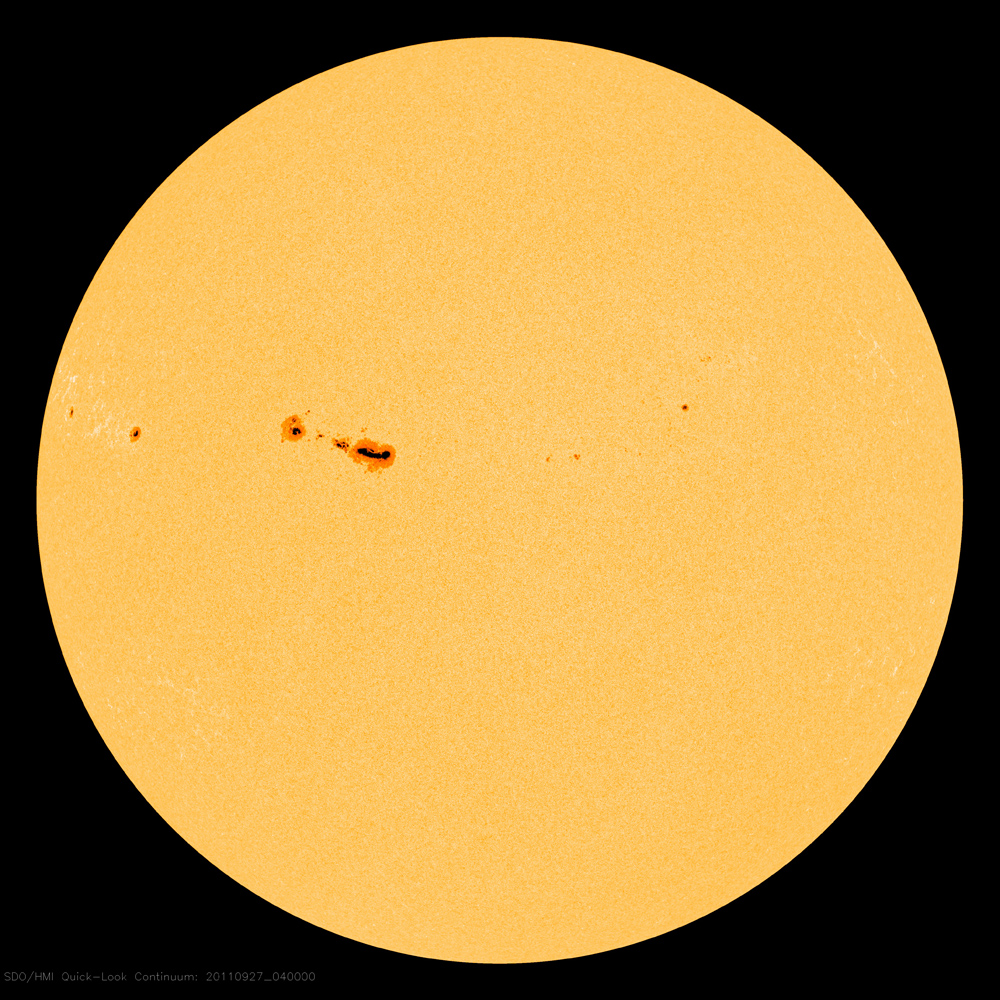Huge Sun Storm Should Super-Charge Northern Lights Tonight

Particles that were blasted from the sun by a huge eruption over the weekend have reached Earth, causing geomagnetic storms on our planet, which will likely trigger a stunning northern lights show for some lucky skywatchers.
The particles reached at Earth at 8:37 a.m. EDT (1237 GMT) today (Sept. 26), kicking off moderate geomagnetic storms at lower latitudes and more serious storms closer to the Earth's poles, according to the U.S. National Oceanic and Atmospheric Administration (NOAA). These storms can disrupt GPS signals, radio communications and power grids, but no such effects have yet been reported, NOAA officials said.
The storms should also give skywatchers in select locations a treat, creating dazzling auroras (phenomena also known as the northern and southern lights). [Photos: Auroras Dazzle Northern Observers]
"Aurora watchers in Asia and Europe are most favorably positioned for this event, though it may persist long enough for viewers in North America," officials with NOAA's Space Weather Prediction Center (SWPC) wrote in an update today.
A powerful solar eruption
The sun unleashed a powerful solar flare and an event known as a coronal mas ejection (CME) on Saturday (Sept. 24). CMEs are massive clouds of solar plasma that can streak through space at 3 million miles per hour (5 million kilometers per hour) or more.
Luckily, this CME delivered a glancing blow. If it had hit Earth directly, the geomagnetic storms — and, possibly, the damage — could have been more serious. But we're not out of the woods yet, SWPC officials said.
Breaking space news, the latest updates on rocket launches, skywatching events and more!
The storm erupted from a region known as sunspot 1302. Sunspots are temporary dark patches on the solar surface caused by intense magnetic activity. The area around sunspot 1302 may be brewing up more trouble. [Photos: Sunspots on Earth's Closest Star]
"Region 1302 remains capable of producing more activity and will be in a favorable position for that activity to have impacts on Earth for the next 3-5 days," SWPC officials said.
For now, however, the biggest effect of the geomagnetic storms may be the auroras, so skywatchers in favorable locations should look up when they get the chance.
People in the mid- to high-latitudes should be alert for auroras after nightfall. The best hours to spot the northern and southern lights tend to be around local midnight, according to the website Spaceweather.com.
Sun ramping up
Sunspot 1302 has been particularly active lately, spouting off multiple X-class fares — the most poweful type — over the last few days. And that restlessness is part of a larger pattern, experts say.
Solar activity has been ramping up over the last few months as the sun has roused itself from an extended quiescent phase in its 11-year cycle of activity.
Just last month, for example, the sun let loose with an X6.9 solar flare, which was the most powerful solar storm since December 2006, NASA scientists said.
And the storms should keep coming over the next few years. Scientists expect activity in the current cycle — known as Solar Cycle 24 — to peak around 2013.
Editor's Note: If you snap a photo of the supercharged aurora and would like to share it with SPACE.com for a story or gallery, please send to managing editor Tariq Malik at tmalik@space.com.
Follow SPACE.com for the latest in space science and exploration news on Twitter @Spacedotcom and on Facebook.
Join our Space Forums to keep talking space on the latest missions, night sky and more! And if you have a news tip, correction or comment, let us know at: community@space.com.

Michael Wall is a Senior Space Writer with Space.com and joined the team in 2010. He primarily covers exoplanets, spaceflight and military space, but has been known to dabble in the space art beat. His book about the search for alien life, "Out There," was published on Nov. 13, 2018. Before becoming a science writer, Michael worked as a herpetologist and wildlife biologist. He has a Ph.D. in evolutionary biology from the University of Sydney, Australia, a bachelor's degree from the University of Arizona, and a graduate certificate in science writing from the University of California, Santa Cruz. To find out what his latest project is, you can follow Michael on Twitter.

